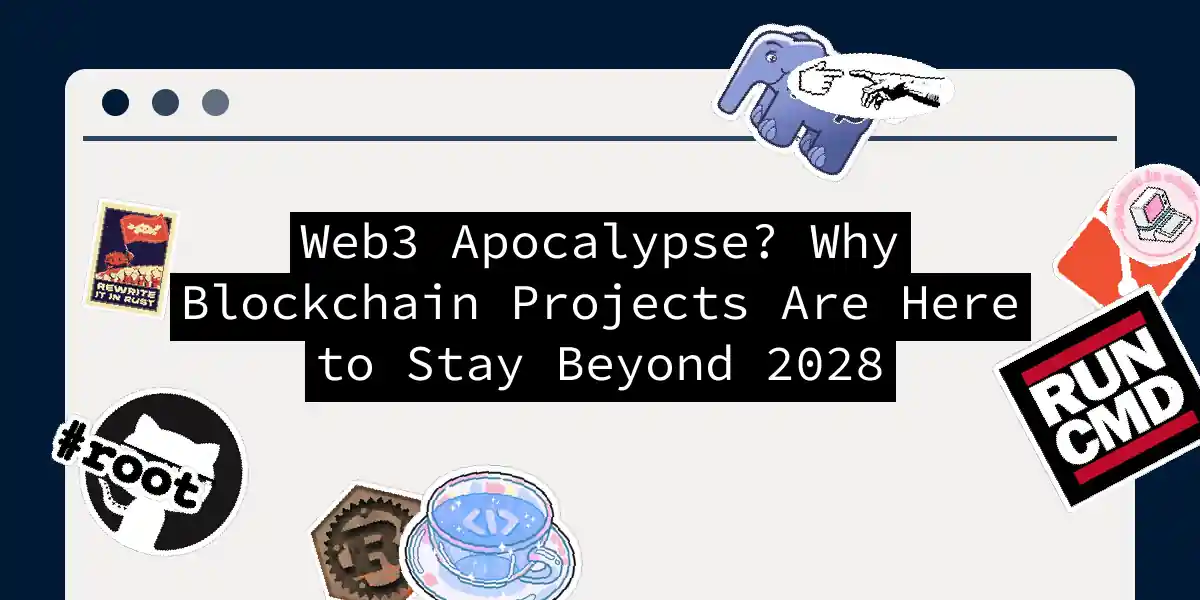Picture this: It’s 2028, and your neighbor leans over the fence whispering, “Remember that Web3 thing? Turns out it was just digital Beanie Babies.” Before you panic-sell your NFT collection or start writing blockchain eulogies, let’s dissect why the “Web3 collapse” narrative is about as accurate as a weather forecast from a Magic 8-Ball. Spoiler alert: The tech isn’t dying—it’s doing push-ups.
Why the Doomsayers Are Dead Wrong
Sure, crypto winters freeze weak projects. But claiming Web3 will vanish by 2028 is like predicting the internet’s demise in 1998 because GeoCities looked janky. Consider three irrefutable realities:
- Bitcoin’s $1.5 million prophecy: Heavyweights like Arthur Hayes () project Bitcoin hitting seven figures by 2028. Corps don’t bet billions on dying tech.
- Institutional adoption: BlackRock’s Bitcoin ETF isn’t a fling—it’s a marriage. When TradFi adopts blockchain infrastructure, extinction isn’t in the cards.
- Halving math: Post-2024, Bitcoin’s supply squeeze () could launch prices into the stratosphere. Scarcity breeds longevity, not obsolescence.
// Exhibit A: Immutable Smart Contract Logic
contract Survivor {
address public owner;
uint256 public resilienceScore = 100;
constructor() {
owner = msg.sender;
}
// Projects die when devs bail. This one self-sustains.
function adapt() external {
if (resilienceScore > 0) {
resilienceScore += 10; // Auto-evolve under pressure
}
}
}
Step-by-Step: Building Blockchain Zombies (That Won’t Die)
Want your project to outlast 2028? Follow this survival checklist:
1. Bake in anti-fragility
Use Layer-2 solutions like Arbitrum to slash gas fees by 90%. Projects that cost pennies to use won’t bleed users during bear markets.
2. The “Uniswap Test”
Can your dApp handle 10x traffic overnight? Stress-test with:
forge test --fork-url <MAINNET_RPC> --match-test "load_test"
If contracts crumble under simulated demand, rewrite them.
3. Tokenomics triage
Bad token distribution kills projects faster than a misaligned DAO vote. Use this Python snippet to audit supply health:
def token_health_check(supply: dict):
whales = [holder for holder in supply if supply[holder] > 5]
if len(whales) > 3:
return "🚨 Centralization risk!"
return "✅ Healthy distribution"
The Mermaid Test: Evolution or Extinction?
Blockchain’s trajectory isn’t linear—it’s Darwinian. Projects that solve real problems survive; vaporware starves. Observe:
Notice the lack of a “Graveyard” node? That’s intentional. We’re not facing extinction—we’re shedding dead weight. By 2028, expect:
- AI-blockchain hybrids replacing clunky oracle networks
- Regulation-compliant DeFi as standard as HTTPS
- Self-custody UX so smooth your grandma will farm yield
The Verdict: Gravediggers Need Not Apply
Will some projects vanish? Absolutely—just like Pets.com did in 2000. But claiming Web3 will disappear by 2028 is like announcing “the internet is over” because MySpace died. The tech isn’t collapsing; it’s consolidating. As Hayes () and quantitative models () hint: Bitcoin’s march toward $1 million+ is a thermonuclear counterargument to doomsday claims. So next time someone mutters “Web3 collapse,” hand them this piece and whisper: “Nice try, boomer.” Now—go build something that’ll make 2028’s FOMO look tame.
